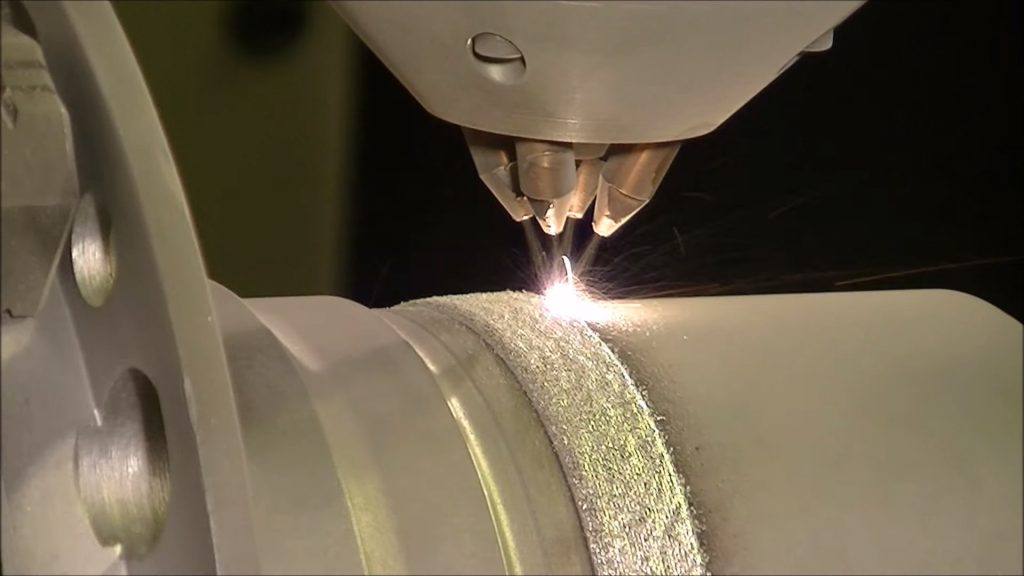A team of researchers from the University of Liege and the Delft University of Technology have developed two new methods of topology optimization designed specifically for large-scale 3D printed parts.
Due to the wide nozzle diameters required to 3D print large structures, there are limitations in how parts can be designed. This typically makes it very tricky to apply topology optimization principles to larger-form builds. Incorporating the nozzle size constraints directly into the techniques themselves, the researchers believe their work is the first to bring the geometric benefits of topology optimization to the domain of large-format additive manufacturing.
Eduardo Fernández, a co-author of the study, explains, “Our manuscript presents a method of topology optimization that enables the generation of optimized designs adapted to the size of the deposition nozzle. Therefore, the method is intended for large-scale processes such as Wire Arc Additive Manufacturing (WAAM), Directed Energy Deposition (DED), or concrete additive manufacturing.”

Feature resolution versus print speed
Large-scale, deposition-based 3D printing processes grant us the ability to fabricate massive freeform structures without the use of casts and molds. To minimize the duration of the 3D printing process, technologies like WAAM and DED often maximize material deposition rates, increasing the print speed of the build. To facilitate the high throughput, it’s not uncommon for a relatively large nozzle size to be used, but this unfortunately has the effect of reducing the resolution of the 3D printed parts (post-processing usually fixes this).
It follows that large deposition rates also complicate other areas of the build such as toolpath planning, where the part being 3D printed may have geometric details smaller than the resolution of the nozzle. If using a smaller nozzle size isn’t an option, engineers often tinker around with some of the other process parameters such as feed rate and travel speed, but this can get very messy, very quickly if the build in question is a particularly large and complex structure.
As such, the designs of large parts are often limited to a discrete number of paths, which makes topological optimization extremely difficult if a rapid print speed is to be preserved. According to the team, there are not yet any reliable methods of topology optimization for large, complex parts, as existing techniques either sacrifice the optimality of the design or the process speed benefits.

How do the optimization methods work?
The first of the optimization methods works by forcing all of the part’s truss thicknesses to be equal to the diameter of the nozzle. Although simple, the technique has proven to be effective, as it ensures all of the substructures within the 3D printed part are suitable for the desired resolution. The limitation of this approach is that it places a cap on the achievable mechanical performance of a design, as each truss in the part has a maximum thickness.
The second method works similarly, instead restricting the maximum thickness of the part’s individual trusses to first generate a skeletal structure. Using filtering and projection techniques, this skeleton is then thickened in accordance with the chosen nozzle size, resulting in a design tailored to the desired resolution. Again, this approach comes with a reduction in the mechanical performance of the part, but it’s not as severe as with the first method.

Further details of the study can be found in the paper titled ‘Topology optimisation for large-scale additive manufacturing: generating designs tailored to the deposition nozzle size’. It is co-authored by Eduardo Fernández, Matthijs Langelaar, Can Ayas, and Pierre Duysinx.
Topology optimization can be an extremely useful tool when strength to weight ratio and material use are of great importance. Just last month, 3D printer manufacturer Stratasys and engineering software developer nTopology added a new Masking Fixture Module to their FDM Fixture Generator software. The topology optimization program is intended to automate the design process for 3D printed jigs, fixtures and other tooling.
Elsewhere, 3D printer manufacturer 3D Systems was recently chosen to take part in a research project that aims to develop topologically optimized heat exchangers for the US Army through additive manufacturing. With optimized parameters such as part volume and contact area, the heat exchangers will be able to more efficiently transfer heat from one component to another.
Subscribe to the 3D Printing Industry newsletter for the latest news in additive manufacturing. You can also stay connected by following us on Twitter, liking us on Facebook, and tuning into the 3D Printing Industry YouTube Channel.
Looking for a career in additive manufacturing? Visit 3D Printing Jobs for a selection of roles in the industry.
Featured image shows the various ways in which truss thickness can be modified. Image via University of Liege.


